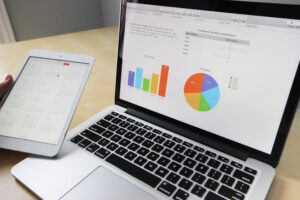Real gross domestic product (GDP) is an estimate of GDP based on constant prices and reflects the overall volume level of GDP.
Table of Contents
ToggleWhat is the Real GDP forecast?
Gross domestic product is a way to gauge a nation’s economic production. Countries that record higher GDPs tend to develop more goods and services in their countries, as well as generally achieve a better quality of life. Therefore, numerous residents and political authorities see GDP growth as a key indicator of national accomplishment, oftentimes using the terms GDP growth and economic development interchangeably. Taking into account several restrictions, though, many economists have asserted that GDP is not suitable for evaluating total economic success or the prosperity of society.
How do you calculate GDP?
GDP is usually calculated annually, but it can also be computed on a quarterly basis. As an example, in the United States, quarterly GDP estimates are provided for both the calendar year and the fiscal quarter that are annualized and adjusted for price changes to account for inflation.
How do you use GDP data for investing?
With the help of the Gross Domestic Product (GDP), economists can determine if an economy is growing or has gone into a recession. Investors, too, take advantage of these figures to make investment choices – a weak market often correlates with lesser earnings and cheaper stocks. Most countries publish their GDP data each quarter and also monthly. In America, the Bureau of Economic Analysis issues a preliminary estimation of quarterly GDP after four weeks have elapsed since the end of the quarter and then provides a more thorough final report three months late. This permits economists and investors to gain awareness about many aspects of the economy.
How do you measure GDP?
There are three ways of measuring GDP:
Output Method
The Output Method measures GDP as the value of what is produced (the output) minus the value of goods and services used to produce the outputs (the inputs). Additionally, taxes on products are added, and subsidies on products are subtracted.
Income Method
The income method to calculate gross domestic product (GDP) involves adding up the total compensation of employees, taxes from production, and imports after subtracting subsidies from production, gross operating surplus, and mixed income.
Expenditure Method
In the expenditure approach, GDP is measured by how much is spent on goods and services. Spending is only counted once as economic activity focuses on the consumer spending of individuals.
Add personal spending to the next expenditure of central and local government spending. Next, add capital spending, which may include machines or buildings. Exports are also added. Then, imports to other countries are subtracted.
The three approaches should theoretically give the same answer of GDP annual rates. However, in practice, financial conditions vary, as do the three methods of calculating GPD. Because the calculations come from different data sources, real GDP growth projections will vary depending on each country’s monetary policy of reporting.
Types of Gross Domestic Product
GDP can be reported in several ways, each of which provides slightly different information.
Nominal GDP
Nominal GDP is an evaluation of economic activity in an economy that considers current prices in its calculation. Therefore, it doesn’t eliminate inflation or the increasing rates of prices, both of which can exaggerate the growth amount.
To compare the GDP of different quarters within the same year, nominal GDP is used. On the other hand, to differentiate GDP among years, real GDP is employed since it eliminates the effect of inflation so that only output volume is taken into account.
Real GDP
Real GDP is an inflation-adjusted metric that indicates the quantity of goods and services produced by an economy in a given period. It adjusts for price variations in order to illustrate the real growth trend. Despite the fact that GDP depends on the monetary values of the products and services, it can still be impacted by inflation.
GDP Per Capita
GDP per capita measures the total GDP of a country divided by its population. This can indicate the output and income each individual in an economy has, which can also show the productivity rate or average living standards of the country. It can be expressed as nominal, real (adjusted for price inflation), or PPP (purchasing power parity).
GDP Growth Rate
The GDP growth rate measures the yearly or quarterly change in a country’s economic output and compares it to previous years or quarters. It is commonly used by policymakers, as it provides an indication of population inflation and unemployment rates. It is usually expressed as a percentage rate.
GDP Purchasing Power Parity (PPP)
Economists look at Purchasing Power Parity (PPP) indirectly as an indication of GDP. This method adjusts the difference in local prices and cost of living to make cross-country assessments of real output, real income, living standard, etc., on an international dollar basis.
FAQ
Is a High GDP Good?
Generally speaking, a higher GDP is viewed as a positive because it is associated with better economic prospects and a higher quality of life. However, it’s important to remember that high GDP does not always equate to an enjoyable living environment, so other measurements must be taken into account.
Which Country Has the Highest GDP?
The US and China have the highest GDP in the world as well as the largest economies. Although depending on which type of measurement is used (nominal GDP, for example), their ranking may change; with a GDP of $23 trillion in 2022, the US takes first place instead of China, with its GDP of $17.7 trillion.



